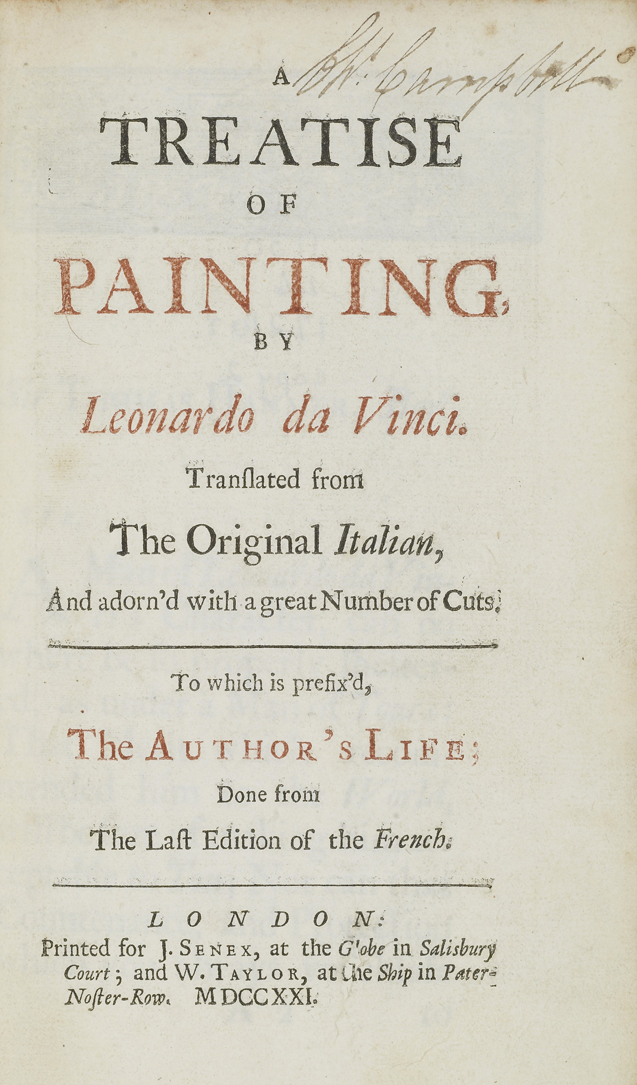
A Treatise on Painting, by Leonardo da Vinci
1721
Senex and Taylor, London
Illustrations:  | Chapter Display  |
I345
The Eye looking at a City, in a Foggy Season, or when the Air is rendered gross, by Smokes, or other Vapours, the Buildings will appear less sensible as they are less elevated, and on the contrary, they will appear the clearer, and more distinct, as they are seen at the greater Height. This follows, from what we have already proved, viz. that the Air is more gross, as it is lower, and more subtile, as it is higher; and may be exemplified in the following Figure; where the Tower A F, is seen by the Eye N, in a gross Air B F, which is divided into four Degrees, each more dense, as it is nearer the Earth.
By how much there is less Air, interposed between the Eye and the Object, by so much will that Object partake less of the Colour of that Air: whence it follows, that as the greater quantity of Air, is found between the Eye and the Object, the Object must appear more tinged with the Colour of the Air. Now that may be thus demonstrated; suppose A E a Tower, O N the Eye, receiving the Species of the five parts of the said Tower A B C D E: now if the Air were of the same density throughout, there wou'd be found the same proportion, between the Degree of Azure, contracted by the Foot of the Tower F, and the Degree of Azure, which the said Tower contracts at the part B, that the Length of the Line M F, bears to the Length of the Line B S: but since 'tis shown in the firmer proposition, that the Air is unequally gross, and that it is denser as it is lower; it follows, that the proportion between the Colours which the Air conveys to the Tower, at different elevations, must exceed the proportion of the Lines; since the Line M F, besides the Excess of its Length, passes through an Air, more dense than that of the Line B S.